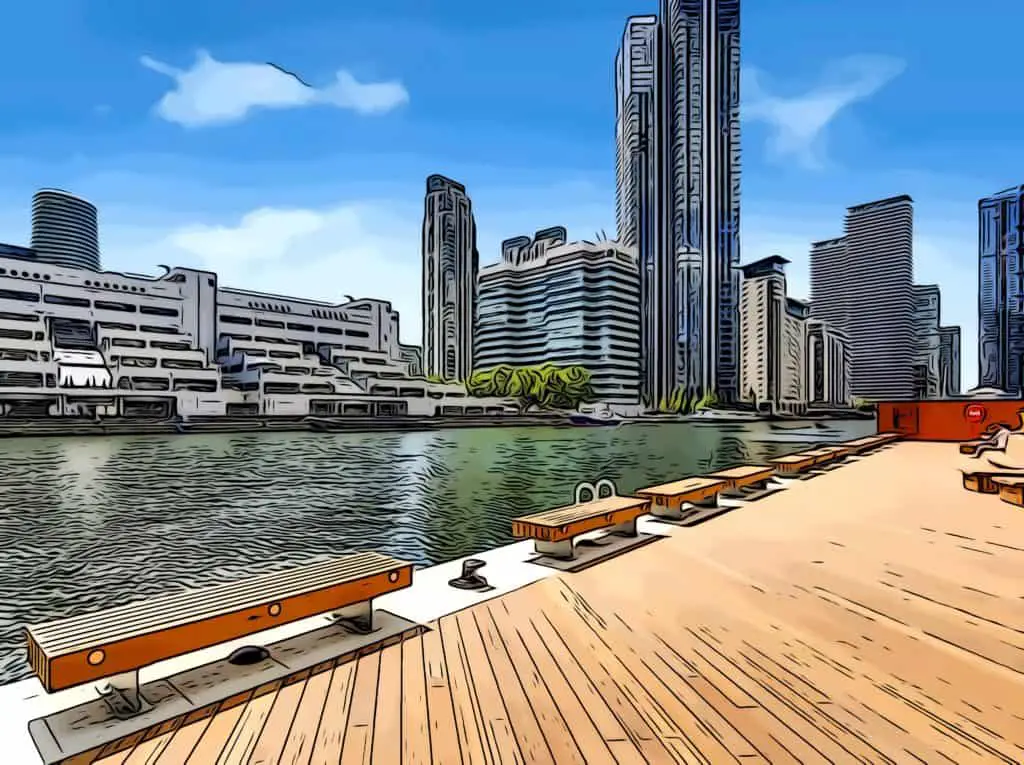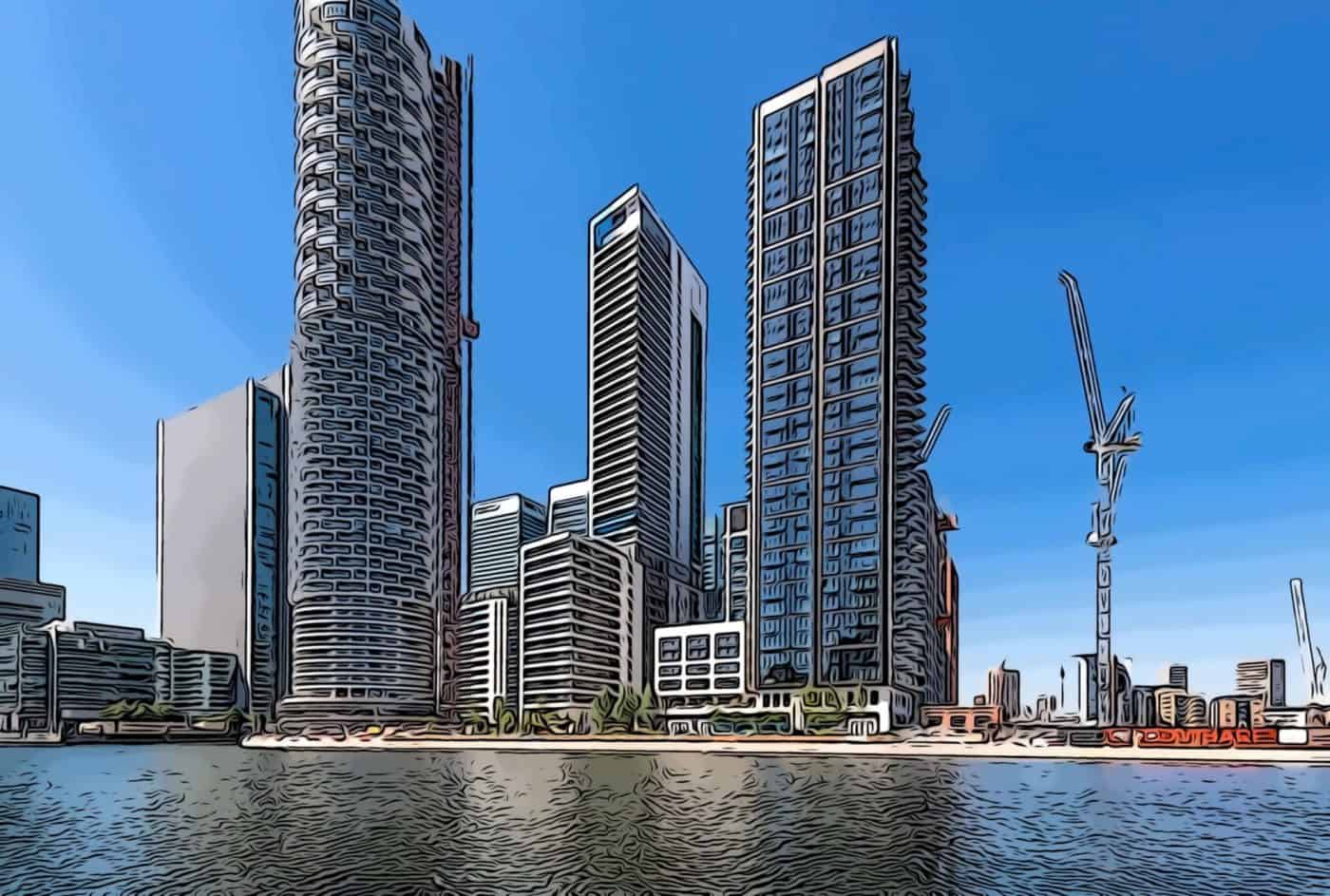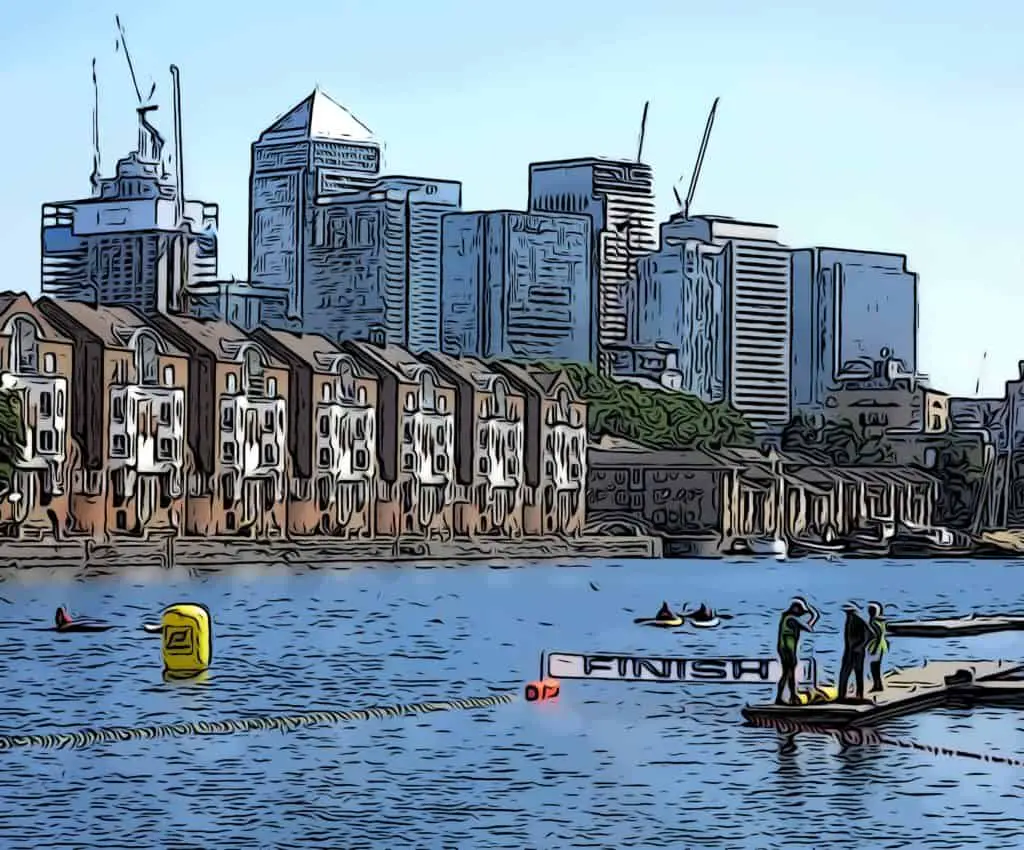Physical Address
304 North Cardinal St.
Dorchester Center, MA 02124

Docklands swimming
The Boardwalk — Wood Wharf
Waterfront property is in. Instead of filling in the docklands to create more land for housing, you are now more likely to find developers demolishing buildings to open up access to the waterfront!
Across the Isle of Dogs, developments with access to the water as a key feature are springing up:
But, is all this access to the docks just for show? Can you really stroll along the boardwalk and jump into the docklands for a quick dip?
We first set out to look at whether you could jump in and swim in Canary Wharf’s docks back in 2021 — read on for more information! However, in the preceding 12 months, Canary Wharf have officially opened an outdoor swimming zone in Middle Wharf. Skip to the end of this article for a complete overview of this approved swimming section.


The water surrounding Canary Wharf is of course from the UKs second longest, and most famous river, the Thames.
Here is a brief overview of why you can, but probably shouldn’t go swimming in the Thames!
The Thames used to have a reputation for being one of the most polluted rivers in the world.
In 1957, the Natural History Museum of London described the river as “biologically dead”. The river in the late 50s was so polluted — due to a combination of heavy metal deposits from industry, overflowing Victorian sewers, and lower rules on environmental standards — that no fish could survive.
The river has improved significantly in the half a century that has passed, and a surprisingly varied amount of wildlife has returned. London Zoo (ZSL) have recorded sightings of, seals, porpoises and even dolphins in the Thames!
There are now over 120 species of fish that live in the Thames. Billingsgate market by Canary Wharf even has a seal mascot, due to the number seals that have returned to the cleaner waters of the area.

While the wildlife beginning to return to the Thames indicates a significant improvement in water quality from the 1950s, for hard data on the water quality you need to look at more scientific methods.
Thames water quality is measured in several ways, with one of the most comprehensive surveys carried out by Thames21. They use a team of 7000 volunteers in partnership with the Environment Agency and Thames Water, and publish their water quality results online:
Coliform bacteria doesn’t gaurantee that the water is harmful, but it does indicate that sewage or animal waste is in the Thames!
It turns out that despite massive improvements in the sewer network, each year around 39 million tonnes of sewage still finds its way into the Thames.
Aside from the water cleanliness there are four main issues with swimming in the Thames:
Water temperatures can be significantly lower than air temperatures.
Even on a hot sunny day, the water temperature of the Thames – especially further under the surface and in currents – can be cold enough to cause shock.
This is known as the gasp reflex, and is why during open water swimming you are encouraged to progress into the water in stages, to gradually acclimatise to the colder temperatures. Gasp reflex causes an involuntary inhalation, often causing the swimmer to take in water and begin to have difficulties breathing.
The Thames is actually the busiest inland waterway in the UK!
There are over 20,000 boat movements a year. Even in the quieter portion of the Thames where swimming is permitted, it is recommended that you wear high vis swimming gear, and over 400 incidents between boats and swimmers are recorded annually.
Aside from the currents created by boat movements, the Thames is littered with piers, bridges and moored barges. These are just the obstructions you can see.
Under the water the river bed changes shape, and various additional underwater hazards from pipelines to reinforced river walls exist.
The Thames is a tidal river, already having significant currents. All of these obstructions to the flow of the water create additional strong and unpredictable currents, making swimming in the thames very challenging even for the most experienced swimmer.
Unfortunately if you do fancy taking a swim around the Isle of Dogs you will be breaking the law! As of 2012, the only part of the Thames that it is legal to swim in without prior permission is a small portion further inland between Putney and Teddington bridge.
For swimming anywhere else in the Thames you will need to contact the Port of London Authority and obtain written permission.
Most of the disadvantages of open water swimming in the Thames are overcome in the docklands area:
For these reasons you can safely open water swim in Canary Wharf and the surrounding docklands.
However, you shouldn’t just jump in! Open water swimming is dangerous, and the threat of unpredictable currents and the cold water remain.
To safely swim in the docks near Canary Wharf there are two large clubs nearby.


The Docklands Water Swimming Club is located 10 minutes south of Canary Wharf on the Isle of Dogs. It is a voluntary run organisation, and offers open water swimming in many flavours – group sessions, drop in practise, and even competitive races.
You don’t need to book beforehand, and the club offer a range of facilities from safety staff and changing rooms to acclimatisation areas to help prevent cold shock.
For an even larger swimming area, the London Royal Docklands provides open water swimming in Royal Victoria dock. This is located about 1.5 miles to the east of Canary Wharf, and can be accessed in around 15 minutes via the Jubilee and DLR lines.
Both venues provide water temperature information, and require you to wear a wetsuit if the water is deemed too cold. They also require swimmers to wear open water swimming approved safety wristbands, to track swimmers and ensure their safety.
If you’ve read the pitfalls of swimming in the Thames, but the summer heat is still making you want to jump in — fear no more! Opened in July 2022, Canary Wharf’s Middle Dock is now an official open water swimming venue.
Partnering with Love Open Water — also the hosts of nearby London Royal Docks open water swimming — Canary Wharf’s middle dock swimming removes virtually all the worries of swimming in the Thames:
As an official open water swimming venue, unfortunately you can’t simply turn up and jump in. Booking is required with allocated time slots, and, like the nearby Docklands Sailing and Watersports Centre, swimmers need to be members of NOWCA.
Swimming sessions in Canary Wharf are £8.
There are a few additional initial costs to open water swimming. Swimmers will need to be members of NOWCA (£15 per year) bring their own brightly coloured hat or tow-float, and ideally will have a wetsuit. It’s recommended not to enter the water without a wetsuit below 15 degrees.
While visions of stepping off the boardwalk at Wood Wharf, or taking a dip by your waterfront apartment at South Quay Plaza should definitely be avoided, there are plenty of options for safe open water swimming near Canary Wharf.
As of 2022, you can go open water swimming in Canary Wharf’s own Middle Dock, surrounded by the business districts famous sky scrapers!
Open water swimming involves a little bit of planning — any of the registered open water swimming sessions require membership of the national open water swimming association, alognside upfront fees. However, the monitored water temperature and quality, alongside safely marked-out routes clear of underwater currents, means this is arguably the only way to safely swim in the Thames.
We look forward to seeing less business suits, and more wetsuits, wandering around Canary Wharf!